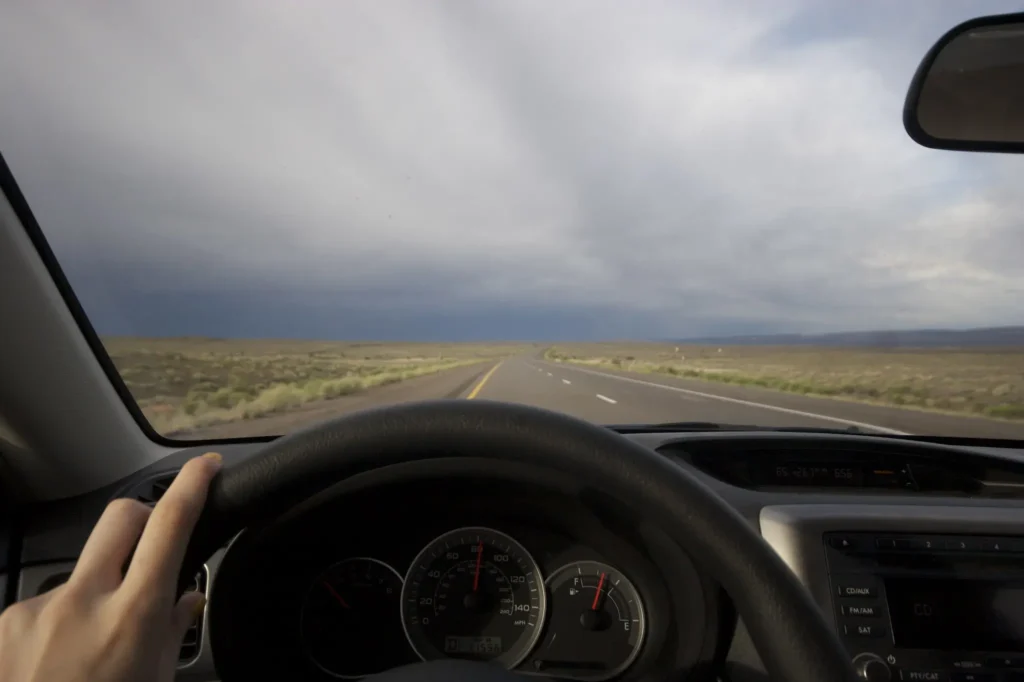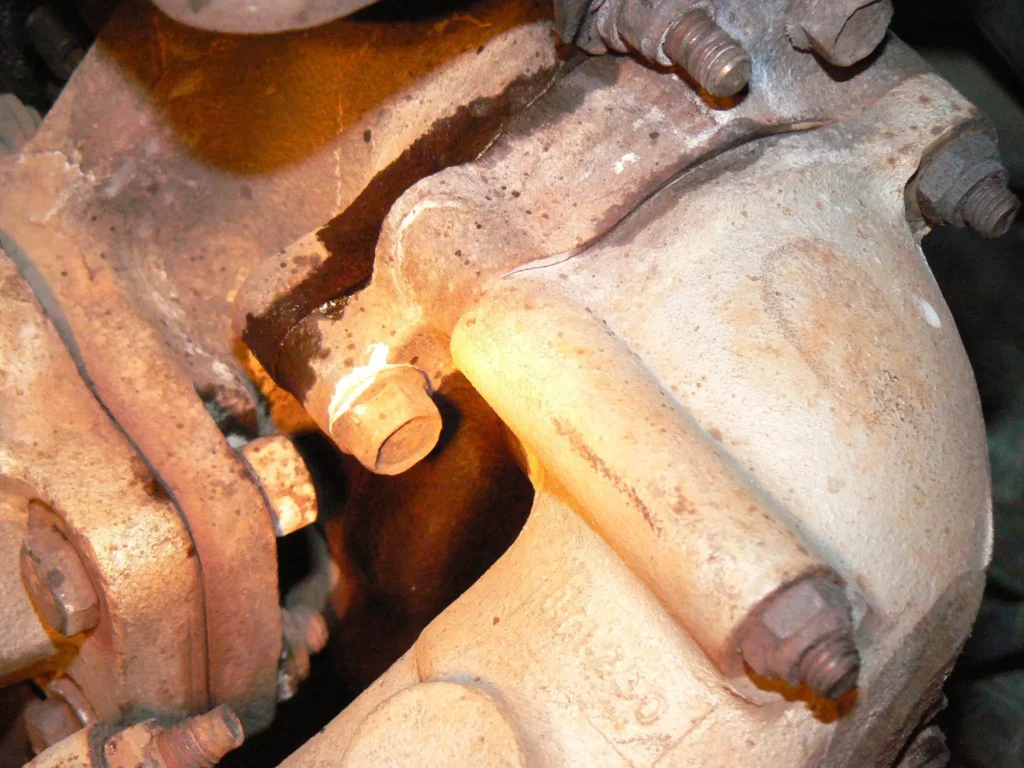If you suddenly hear loud squeaking or snapping sounds coming from under the hood of your car, there’s a good chance your serpentine belt has decided to call it quits. But what causes these unsung heroes of the engine bay to fail in the first place? Read on as we get to the bottom of What Causes a Serpentine Belt to Break?.
What is a Serpentine Belt and What Does it Do?
Before we understand What Causes a Serpentine Belt to Break?, let’s quickly go over what a serpentine belt is and why your car needs one:
- Also called the accessory drive belt, it snakes around pulleys that drive engine accessories like the alternator, AC compressor, power steering pump and sometimes the water pump. Hence, the serpentine shape.
- It transfers power from the crankshaft to these components. Without it, say bye-bye to power steering, working AC, a charged battery and engine cooling.
- Modern cars use a single serpentine belt instead of individual belts for each accessory. This simplifies the system and reduces maintenance.
- Materials like rubber, polyester and fiberglass give it the strength and flexibility needed to drive accessories.
So in essence, the serpentine belt is the unsung workhorse delivering power where it’s needed to keep your car running smoothly. When it fails, things can get ugly real quick.
Top 5 Reasons Why Your Serpentine Belt Snaps
A serpentine belt is built to last between 60,000-100,000 miles. But extreme heat, wear and tear, and problems in the pulley system can cause premature failure. Here are the usual suspects when it comes to what causes a serpentine belt to break:
1. Old Age and Exposure to Heat
Serpentine belts contain rubber which becomes brittle and cracked over time, especially when exposed to high engine bay temperatures. Even the best quality belt will eventually dry out and snap if not replaced.
Small surface cracks on an old belt are normal. But deep cracks that go all the way through mean it could break at any time. Watch out for these and replace old belts as part of scheduled maintenance.
2. Misaligned Pulleys
The serpentine belt travels over pulleys on its route around the engine bay. If any pulley is bent, warped or misaligned, it can cause uneven wear on the belt. This speeds up cracking and increases the chance of snapping.
Symptoms of a misaligned pulley include squeaking noises at high speeds or the belt slipping off pulleys. Have your mechanic check the alignment if you suspect this issue.
3. Problems with the Belt Tensioner
The belt tensioner provides the right amount of tension to stop slippage as the belt spins. Issues here can cause a loss of tension.
What Causes a Serpentine Belt to Break? A weak or faulty tensioner spring won’t keep the belt taut enough. And leakage in a hydraulic tensioner reduces pressure on the belt. In both cases, the loose belt is more likely to snap or get thrown off.
4. Worn or Sticking Pulleys
The serpentine belt rides on smooth spinning surfaces. But pulleys with worn bearings don’t spin freely, causing added friction against the belt. Sticking pulleys increase resistance, overloading the belt.
Inspect pulleys regularly and replace any with bad bearings. Lubricating the pulley surfaces can also help reduce friction in some cases.
5. Foreign Contaminants
Oil, coolant and other fluids that leak onto the belt act as lubricants, causing it to slip on pulleys. Small stones and road debris flung into the engine bay can nick and gouge the belt’s surface. And accumulations of dirt and grime also add to wear and tear.
Fix any leaks right away, and clean debris with pressurized air. Installing an engine cover shield helps block projectiles.
6 Telltale Signs Your Belt is On Its Way Out
Catching problems early allows you to replace a worn serpentine belt before it leaves you stranded. Watch for these signs:
- High pitched squealing or squeaking noises from the belt area, especially when accelerating.
- The belt slipping off pulleys or jumping up and down on them. Visually inspect for this issue.
- Cracks in the belt rubber that go deeper than just the surface, especially forming on the inner side.
- Frayed spots or missing chunks where the belt’s ribs have started peeling away.
- Fluids leaking onto the belt and pulleys or dirt/debris buildup in the area.
- Warning lights for battery, temperature or charging system problems resulting from belt-driven accessories failing.
If you notice any of the above symptoms, have your serpentine belt checked and replaced if needed. It’s a simple and inexpensive fix that takes just minutes.
Emergency Action if Your Belt Breaks While Driving
What Causes a Serpentine Belt to Break? Hearing that distinctive snap and slap of your serpentine belt breaking while driving can be unnerving. Here’s what you should do in such a situation:
- Remain calm and signal your intention to pull over safely as soon as you can. Look for a wide shoulder or parking lot.
- Your engine will keep running but power steering and AC will fail immediately, and the battery discharge light will come on. Drive slower and use more effort to turn the wheel.
- Monitor the temperature gauge closely for signs of overheating. Turn your heater on high to reduce engine heat.
- Shut off any non-essential electrics to conserve battery power if needed to keep the engine running.
- Call for roadside assistance and have your vehicle towed to a repair shop. Don’t attempt to drive far with a broken belt.
- If you’re stuck in traffic during hot weather, apply your parking brake and shift to neutral briefly to reduce load on the engine and prevent overheating.
Can You Still Start a Car with a Broken Belt?
While you can technically start a car with a broken serpentine belt, here’s what you should know:
- The starter motor cranks the engine during starting. This doesn’t require the belt. So yes, the engine will turn over and start.
- But once running, the battery won’t get recharged, and accessories like power steering will quickly fail. So it’s best not to start the car just to move it off the road.
- If you need to shift the vehicle in an emergency, limit operation to the minimum required and refrain from restarting once stopped. Call for assistance.
- Driving any distance with a broken belt can lead to an overheated engine, dead battery or failed pulley bearings. It’s risky and best avoided.
How Does a Brand New Belt Just Snap for No Reason?
What Causes a Serpentine Belt to Break? You just had your belt replaced, and it breaks again shortly after. Frustrating! Here are some possible reasons a brand new serpentine belt might fail prematurely:
- Wrong belt installed: Using the wrong size or type of belt that doesn’t match OEM specs can cause early failure.
- Over-tensioned: A mechanic might have set the tension too high, over-stressing the new belt. Always check the tensioner setting after a new belt is installed.
- Pulley misalignment: If a bent, warped or misaligned pulley wasn’t fixed, it can quickly wear down a new belt. Inspect pulleys whenever the belt is removed.
- Sticking accessory: If an accessory like the AC compressor or alternator seizes, it can overload the belt and cause it to snap. Check components are spinning freely.
- Trapped debris: A small stone stuck in the belt’s groove can saw through the ribs, even on a new belt. Always inspect belts for embedded debris.
- Manufacturing defect: Very rarely, a defective belt might slip through quality checks. Check for warranty coverage with your parts supplier for premature failure.
FAQs – What Causes a Serpentine Belt to Break?
What causes the serpentine belt to shred?
Shredding is usually caused by friction from pulleys with stuck or worn bearings. Debris getting caught in the belt can also saw through the edges. And oil on the belt reduces grip, allowing it to slip and tear against pulleys.
What would cause a serpentine belt to pop off?
Insufficient tension from a faulty tensioner, bent pulleys, and oil-soaked belts that slip can all potentially cause the serpentine belt to jump off the pulleys.
How long will a cracked serpentine belt last?
It depends on the depth and location of cracks. Shallow surface cracks may last long periods before worsening. But deep cracks across the belt’s ribs spell trouble. The belt could snap at any moment once this damage occurs. Replace it ASAP.
What are the symptoms of a bad serpentine belt?
Squealing noises, slipping on pulleys, severe cracking, chunks missing from the ribs, fluid leaks on the belt, and warning lights related to belt-driven accessories are symptoms of a worn belt needing replacement.
Will a broken serpentine belt destroy my engine?
No, a broken belt won’t directly damage the engine in most cases. But it can lead to catastrophic overheating from coolant pump failure or accessory seizure. And a dead battery leaves you stranded. So a broken belt can potentially cause secondary damage if you keep driving.
How many cracks are OK for serpentine belt?
Shallow surface cracks are considered acceptable, even on new belts. But cracks that run deeper through the belt’s body indicate material breakdown. Any cracks that penetrate over halfway through the belt’s thickness warrant immediate replacement.
Take Preventative Action
We’ve covered all the common causes for serpentine belt failure. But a little preventative maintenance goes a long way towards avoiding being left on the roadside when your belt does break. Here are some smart tips:
- Inspect often: Make it a habit to check belt condition and look for leaks/debris during routine engine bay checks. Watch for cracking and glazing.
- Replace on schedule: Most belts should be replaced around 60-100k miles. Sticking to the maintenance schedule keeps aging belts from failing.
- Fix leaks promptly: Oil, coolant or AC drips cause slippery conditions. Clean up leaks right away to keep belts gripping properly.
- Check pulley alignment: Misaligned pulleys wear belts unevenly. Have your mechanic periodically check and correct pulley alignment.
- Consider Kevlar-reinforced belts: Upgrading to Kevlar-reinforced belts provides longer life and resistance to heat and cracking.
The Bottom Line – What Causes a Serpentine Belt to Break?
What Causes a Serpentine Belt to Break? To summarize, the main causes of premature serpentine belt failure include age and heat damage, problems with pulleys and the tensioner, and foreign contaminants like oil and debris. Watch for symptoms like noise and cracking to identify worn belts before they leave you stranded. With proper inspection and maintenance, you can help your serpentine belt go the distance.

